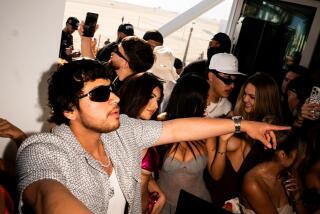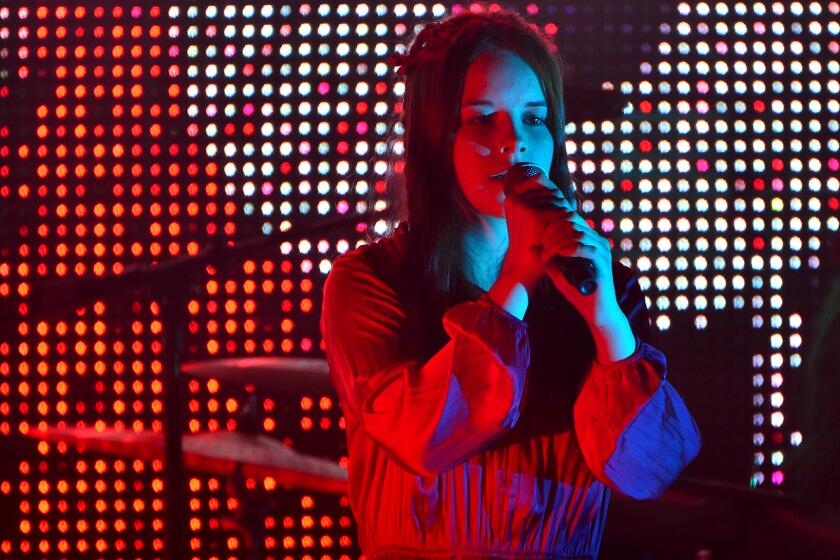A Buena Vista Member Triesa New Club
On a recent night in Mexico City, Ramon “Bostich” Amezcua, a founder of the Tijuana electronica collective Nortec, was surprised to see an older gentleman dancing at the front of the stage during Amezcua’s live DJ set.
He recognized the man as Orlando “Cachaito” Lopez, the 68-year-old bassist with the Buena Vista Social Club and the nephew of legendary mambo inventor Israel “Cachao” Lopez.
“He happened to be in town and came to the show because he had heard about Nortec and wanted to see us live,” Amezcua recalled with a smile. “And he was baile y baile [dancing nonstop] in front of us.”
The idea of Cachaito dancing at an electronic festival might come as a surprise for anyone who knows the bassist solely from the elegant beauty of his work on albums by Ibrahim Ferrer and Omara Portuondo, as well as on the original Buena Vista record.
But an even bigger surprise is Cachaito’s debut solo album on Nonesuch Records.
From the cover, the CD looks like yet another Buena Vista project with its rustic packaging featuring smoky black-and-white photos of veteran musicians conducting late-night sessions in Havana. Even the lineup looks familiar: Amadito Valdes on timbales, Miguel “Anga” Diaz on congas and Ferrer singing on one track.
You might sigh when you put the album in your CD player, expecting to get yet another serving of spirited sones and velvety boleros, the warm, life-affirming tones that are a Buena Vista trademark.
The first clue that something new is going on is when you hear a brief spoken segment in which Cachaito answers the phone and reassures the caller that there’s always swing in his playing. The intro is followed by the start of a sweeping orchestral tune unlike anything the Buena Vista project has given us.
The sound is sparse and majestic, the playing concise and economical. Cachaito’s larger-than-life tumbaos --a signature bass pattern in Afro-Cuban music--remind you of Charles Mingus, the late jazz bassist. There’s a raw, almost apocalyptic feel to this selection.
The surprises continue. The electric guitar of former Zafiros player and Buena Vista collaborator Manuel Galban and the Hammond organ of Bigga Morrison lend the project a rockish feeling that recalls the fusion movement of the ‘70s. Then, the track “Cachaito in Laboratory” ushers in the jarring sound of a drum machine. “Tremendo,” murmurs a female voice, and the moment is loaded with the kind of raw sensuality associated with hip-hop.
There’s also scratching and sampling, and a typical Valdes timbale roll being repeated hypnotically.
Buena Vista goes electronic? It is the only moment in the record that feels forced, but you surrender to the gimmick because by that point, you’ve come to realize that Cachaito’s hunger for experimentation has no limit. As it turns out, the bassist is not alone in his quest.
“This was a real laboratory, but without the chemicals,” Cachaito says with a laugh. “The record was made by Anga Diaz, [producer] Nick Gold and me. We analyzed every possible detail and decided to give [these sessions] a different feel, like replacing the piano with a Hammond and bringing a touch of hip-hop to it.” It is not surprising to see Diaz involved in the project. The Paris-based conguero was also a key player in the recording last year of “A Lo Cubano,” the debut album by Cuban hip-hop collective Orishas, a record that single-handedly took Latin American music in a new direction with its successful cross of rap aesthetics and Latin folklore.
Besides being intrigued by the textures of hip-hop and electronica, Cachaito hopes this experiment will turn a younger crowd onto the Afro-Cuban genre.
“I thought young people would really enjoy what we’re doing,” he explains. “It’s different and refreshing, but at the same time, we’re transposing the descargas [jam sessions] of the ‘50s into the year 2001. The essence of Cuban music, the tumbaos, remain the same.”
Cachaito promises to continue his idiosyncratic musical journey with a second solo album.
“I still enjoy playing with the Buena Vista Social Club,” he concludes. ‘But this laboratory of sounds that we have going is a good thing. People have responded to it so well that I’m a little surprised myself.”
*
ANOTHER DIVIDEND: The Rough Guide series of music compilations strikes again with “The Rough Guide to Merengue & Bachata,” an indispensable collection from World Music Network Records that is likely to make you see the music from the Dominican Republic in a different light.
It is easy to dismiss merengue’s thumping beat if you have only been exposed to the genre’s most commercial practitioners (think Elvis Crespo). Merengue is easy to dance to and, generally speaking, lacks the complexity and sophistication of salsa.
Yet the 16 selections on this disc offer a different perspective. The treats begin with Antony Santos’ “Cojelo Ahi” (with its skittish beat and a guitar line recalling the African soukous sound) or Blas Duran’s “Crei,” (a merengue-house, it finds Duran delivering a hilarious rap with his throaty, no-nonsense voice). There is a rootsy sweetness to the tracks that shows merengue can be both addictive and fun.
Even more infectious, the bachata is a genre that hooks you on a first listen, much like the Colombian cumbia or the vallenato. A byproduct of the bolero, the bachata is defined by its gentle, syncopated beat, melodious guitar arpeggios, nasal choruses and impossibly melodramatic lyrics.
Juan Luis Guerra, the Dominican singer-songwriter who turned bachata into a worldwide phenomenon in the early ‘90s, is not included in this compilation. But a couple of superb bachatas by Nelson Roig and Luis Segura more than make up for his absence.
More to Read
The biggest entertainment stories
Get our big stories about Hollywood, film, television, music, arts, culture and more right in your inbox as soon as they publish.
You may occasionally receive promotional content from the Los Angeles Times.










